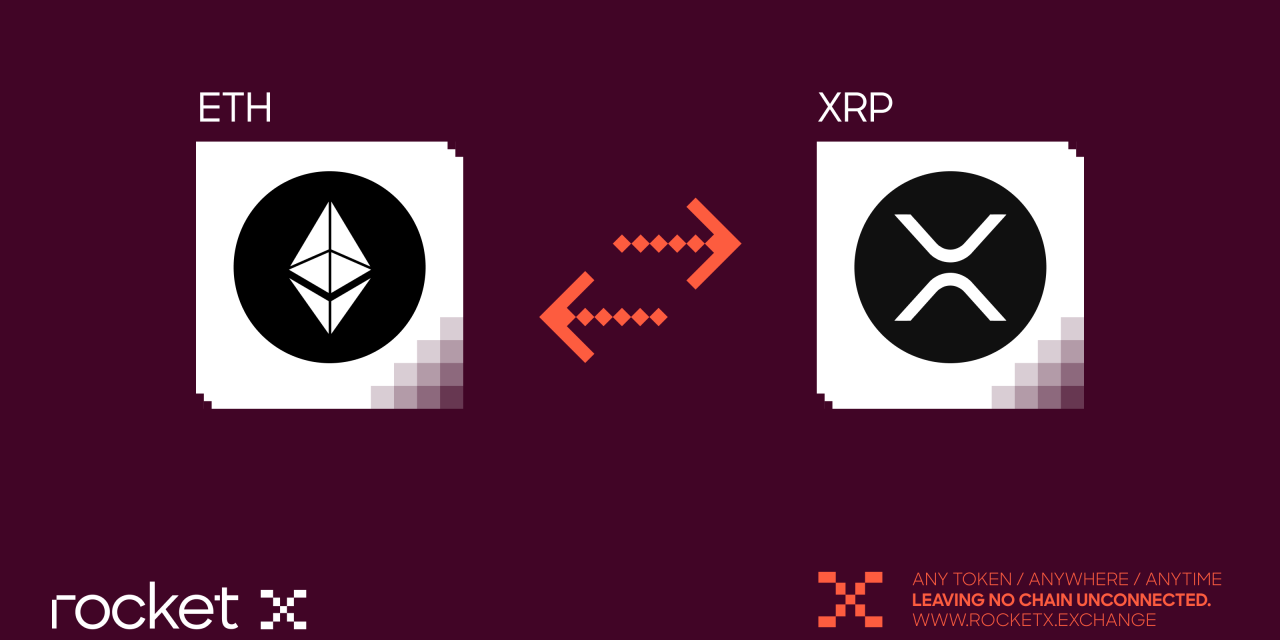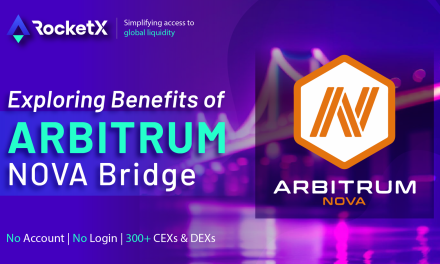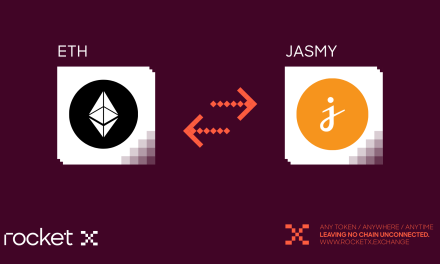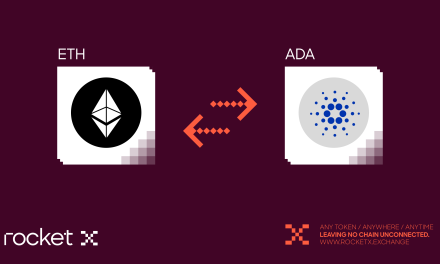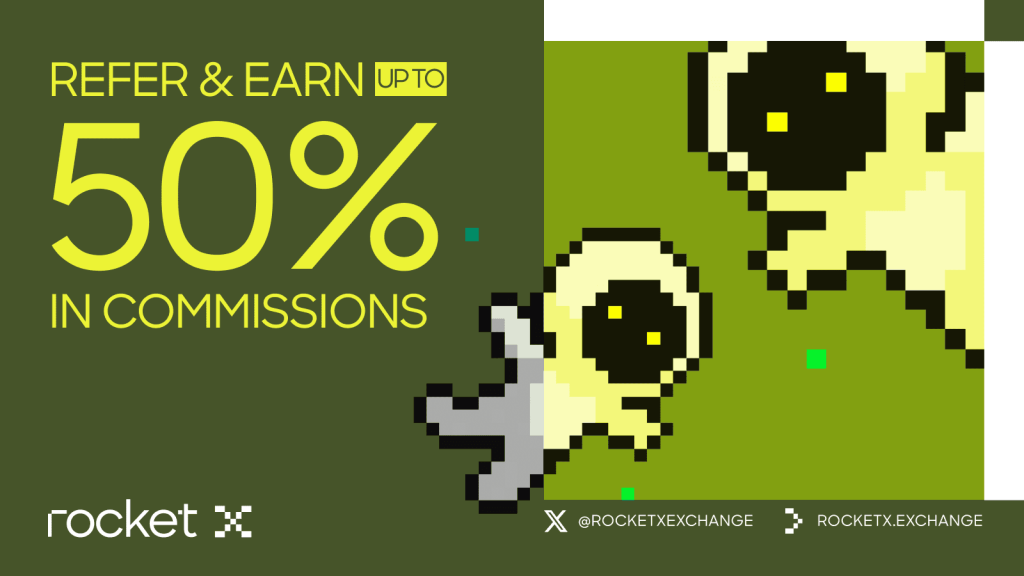
Introduction
Ripple has long been a game-changer in the evolving landscape of digital finance. With its native token XRP and the underlying XRP Ledger (XRPL), Ripple continues to redefine how global money moves by offering speed, efficiency, and scalability that traditional banking systems simply can’t match.
Unlike many cryptocurrencies created for speculation or decentralization experiments, Ripple was designed from the start to serve financial institutions. It enables real-time settlement of cross-border payments at a fraction of the cost and time required by traditional systems like SWIFT.
In this article, you’ll learn everything about the Ripple Network and XRP token—how the network works, the token’s use cases and tokenomics, how to bridge ETH to XRP using RocketX, the best crypto wallets to store XRP, and Ripple’s long-term growth potential.
What is Ripple Network ?
Ripple refers to both the company (Ripple Labs) and its blockchain network, which was built to modernize cross-border financial infrastructure. XRP is the digital asset that powers the XRP Ledger (XRPL), a decentralized, open-source blockchain that supports fast, low-cost, and secure money transfers across the globe.
Ripple was founded in 2012 by Chris Larsen and Jed McCaleb. Larsen shaped the company’s strategic vision to build financial transparency and efficiency using blockchain, while McCaleb contributed to the technical foundations of the XRP Ledger and its consensus protocol.
Unlike Bitcoin or Ethereum, XRP wasn’t built for mining or staking. Instead, it’s a pre-mined digital asset designed specifically to bridge global currencies and eliminate friction in cross-border transactions.
How This Network Work?
The Ripple Network is powered by the XRP Ledger (XRPL), which uses a unique consensus mechanism known as the Ripple Protocol Consensus Algorithm (RPCA). Unlike traditional blockchains that rely on mining (like Bitcoin’s proof-of-work) or staking (like Ethereum’s proof-of-stake), Ripple’s RPCA achieves near-instant transaction finality, typically in 3 to 5 seconds, with minimal energy consumption. This makes it exceptionally efficient, eco-friendly, and cost-effective, with transaction fees as low as $0.00001.
At the core of Ripple’s utility is RippleNet, a global financial network that enables institutions to send money across borders in real time. One of its flagship services, On-Demand Liquidity (ODL), uses XRP as a bridge currency. Instead of requiring banks to maintain nostro/vostro accounts (pre-funded accounts in foreign currencies), ODL allows them to instantly convert fiat into XRP and then into another fiat, freeing up capital and accelerating settlement times.
This architecture positions it as a game-changing solution for cross-border payments, appealing to banks, remittance firms, and fintechs seeking faster, cheaper alternatives to legacy systems like SWIFT. In essence, Ripple replaces outdated infrastructure with frictionless, blockchain-powered global transactions.
Everything You Need to Know About the XRP Token
XRP is the native cryptocurrency of the XRP Ledger (XRPL)—with a fixed total supply of 100 billion tokens, all of which were pre-mined at launch, meaning no new XRP will ever be created. As of now, over 58 billion XRP are in circulation. The remaining supply is held in Ripple-managed escrow accounts, with a controlled monthly release to avoid flooding the market. This transparent release schedule enhances predictability and investor trust.
Every transaction on the XRP Ledger burns a small amount of XRP (typically 0.00001 XRP), introducing a deflationary mechanism that reduces the total supply over time.
What Makes XRP Unique?
- Speed: Transactions settle in 3–5 seconds, much faster than Bitcoin or Ethereum.
- Cost: Fees are extremely low, often less than $0.0001 per transaction.
- Scalability: XRPL can handle 1,500 transactions per second (TPS), with the potential to scale even further.
- Eco-Friendly: No mining means a minimal environmental footprint compared to proof-of-work blockchains.
- Interoperability: XRP acts as a bridge currency, connecting disparate financial systems and reducing dependency on expensive intermediaries.
XRP Use Cases
- Cross-Border Payments: XRP powers RippleNet’s On-Demand Liquidity (ODL), helping financial institutions convert one currency to another instantly.
- DeFi & AMMs: With the XLS-30d upgrade, XRPL supports automated market makers (AMMs) and decentralized finance protocols.
- Stablecoin Infrastructure: Ripple’s RLUSD stablecoin, launched in 2025, expands XRP’s role in multichain liquidity.
- Tokenization: From real estate to carbon credits, XRPL is used for secure, low-cost asset tokenization.
- Micropayments: Thanks to its low fees, XRP is ideal for streaming services, content monetization, and tipping.
Whether you’re a trader, developer, or investor, XRP stands as one of the most utility-driven tokens in the crypto space. It’s not just a speculative asset—it’s an infrastructure token powering real-world financial applications.
How to Convert ETH to Ripple(XRP): A Step-by-Step Guide using RocketX.
Looking to swap your Ethereum (ETH) for XRP quickly, securely, and without the hassle of centralized exchanges or complex bridges? RocketX Exchange is the most efficient way to do it. As a hybrid crypto aggregator, RocketX pulls liquidity from 500+ DEXs and CEXs and supports cross-chain swaps across 180+ blockchains, including the XRP Ledger.
Here’s your easy step-by-step guide to convert ETH to XRP using RocketX:
Visit RocketX: Navigate to RocketX and establish a connection with your cryptocurrency wallet, including options like MetaMask Rabby, OKX, Bitget Wallet, etc.
Select Conversion: Identify the network from which you intend to convert assets to the Ripple Network. In this instance, we will be using Ethereum as our example.
Select Networks:
Source Network: Choose Ethereum (ETH).
Target Network: Choose Ripple Network (XRP).
Enter Conversion Details: Please state the amount of ETH you intend to convert into XRP. Confirm that the wallet address for receiving XRP on the Ripple Network is correct.
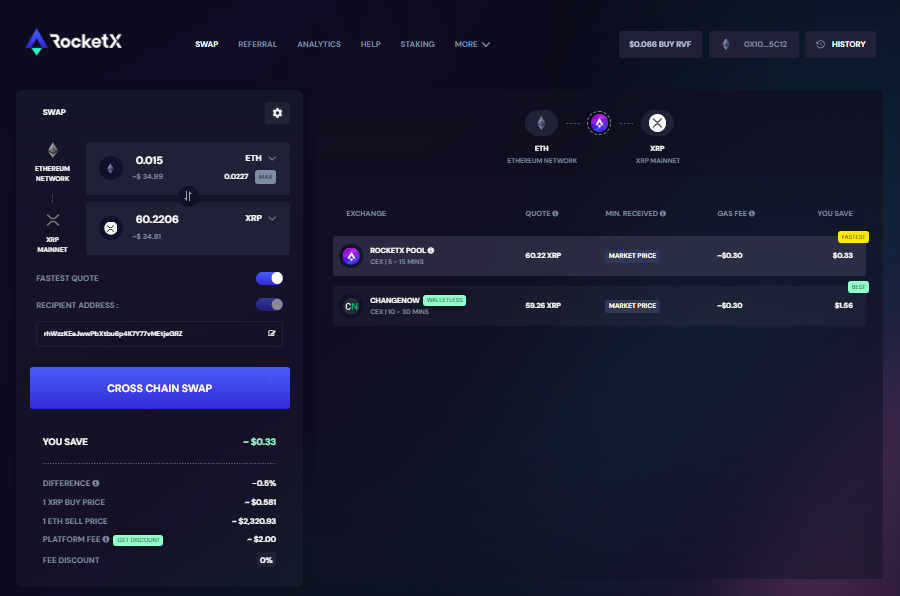
Review and Confirm: Review the conversion details, including fees and exchange rates, Once everything looks correct, click cross-chain swap to initiate the process. To proceed, confirm the transaction within your wallet.
Complete the Swap: The conversion will be executed by RocketX, with your XRP being transferred to the wallet you have indicated.
Top Wallets for Managing XRP on the Ripple Network
- Xaman
Type: Non-Custodial XRP Wallet
Features: Xaman is specifically designed for the XRP Ledger, making it a top choice for dedicated XRP users. As a non-custodial wallet, Xaman gives users full control over their private keys, ensuring that no third party has access to their assets, and providing enhanced security and autonomy for XRP holders. - Trust Wallet
Type: Multi-Currency Mobile Wallet
Features: Trust Wallet is one of the most popular wallets available, offering support for a wide range of cryptocurrencies, including XRP. Its flexibility makes it ideal for users who manage multiple assets, allowing them to store various cryptocurrencies in one place. With a user-friendly interface and comprehensive security features, Trust Wallet is a reliable choice for XRP and other crypto assets. - Xumm
Type: Mobile Wallet
Features: Xumm is a specialized XRP wallet built specifically for the Ripple network. It allows users to manage their XRP, interact with features of the XRP Ledger, and sign transactions directly on the network. With its focus on the XRP ecosystem, Xumm is a trusted tool for managing and engaging with the XRP Ledger.
The Future of Ripple and Its Potential.
The company continues to forge new partnerships and find new opportunities to apply its technology. Ripple’s interest in CBDCs shows that the company is quick to implement a progressive approach.
With an increasing number of financial institutions looking for ways to reduce costs and times for cross-border transactions, Ripple’s technology may reach a wider audience. If Ripple can find its way through the current regulatory challenges and continue proving the value of its technology, it is in a position to shape the future of global finance.
Cryptocurrency experts give annual forecasts for the price of XRP. For 2030, it is forecasted that XRP might be traded within the range of $5.01-$6.16. During the year, its average cost is forecasted to be around $5.19.
Conclusion.
Ripple cryptocurrency represents a bold step towards faster, more efficient digital payments and cross-border transactions. Its unique approach to working with existing financial systems, combined with its speed, low costs, and scalability, positions it as a potentially transformative force in the world of finance.
While challenges remain, particularly in the regulatory space, Ripple’s impact on the financial industry is undeniable. As the world becomes increasingly interconnected and the demand for seamless global transactions grows, technologies like Ripple may well become the backbone of a new, more efficient financial system.

